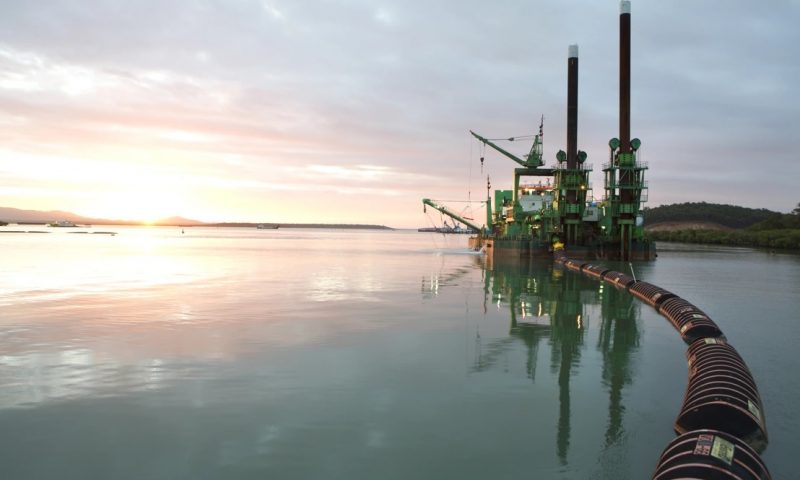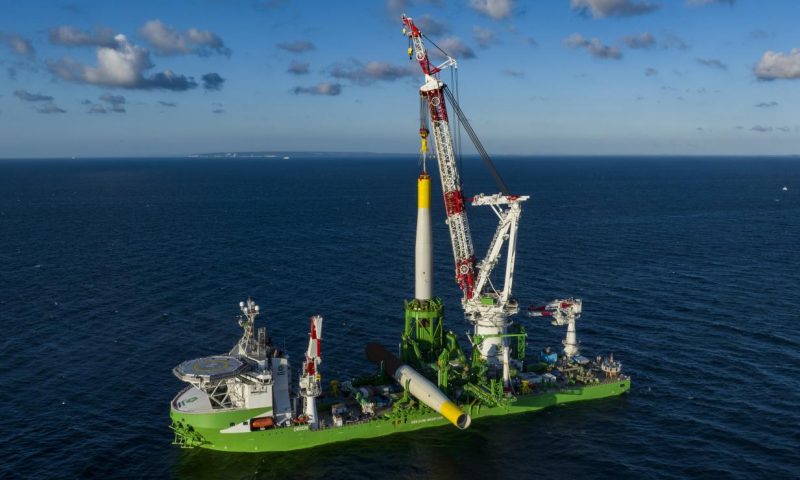
Colruyt Group is launching the first phase of Westdiep Sea Farm
This week marks the start of the maritime works for the first phase of ‘Westdiep Sea Farm’ off the Belgian coast. Together with its Belgian partners, Colruyt Group is developing the first commercial sea farm for mussel growing in Belgium. In the coming weeks, the team responsible for the engineering and construction of the sea farm will place the cardinal buoys and the special marker buoys to mark off the zone. The demarcation buoys are necessary to guarantee the safety of the seafarers. For this purpose, a safety platform which continuously monitors maritime activity in Zone C is also operational. In accordance with the user permit, Colruyt Group will also proactively inform the various stakeholders about the progress of the works. Zone C will not be fully exploited immediately. In this initial phase, an area of only 1 km² or a quarter of zone C will be exploited. The first farmed mussel lines will be installed in the water in the spring. Colruyt Group expects to be able to offer the first mussel harvest to Belgian consumers in the summer of 2023.
Preparations completed
The Marine Spatial Plan (MRP) 2020-2026 for the North Sea provides for five zones for commercial and industrial activities. After several successful research projects, Colruyt Group decided to apply for an operating and environment permit from the Federal Marine Environment Service and the Scientific Service Management Unit of the Mathematical Model of the North Sea (MUMM). In December 2020, Colruyt Group obtained the permits for one of these 5 commercial zones to develop aquaculture activities in the Belgian part of the North Sea. The innovative project is located in Zone C, 5 kilometres off the Belgian coast and is better known as the Westdiep zone
All preparations for ‘Westdiep Sea Farm’, such as the design of the installation according to international maritime standards for aquaculture, up to the choice of materials and the safety provisions, are now complete. The final design was certified by the Belgian accredited inspection and certification body Vincotte so that actual construction can begin in the spring. A specialised team within Colruyt Group, together with partners such as DEME, GEOxyz and Parkwind, is responsible for the engineering and construction of the sea farm.
Ensuring safety at sea
It goes without saying that safety is a priority for activities at sea. By analogy with the construction of offshore wind farms and in accordance with the legal provisions, the first step in the installation of the sea farm is to demarcate a safety zone around the farming area. This is to prevent other seafarers from entering the breeding zone. The safety perimeter is marked with 10 cardinal buoys and the breeding zone is marked with 6 special marker buoys. The cardinal buoys, in accordance with the IALA standard*, are responsible for the geographical marking at sea and are therefore indispensable for indicating safe waters to seafarers. The various yellow-black colour combinations with black symbols of the buoys act as a recognition point. In addition, specific light signals per type of buoy ensure that the zone is visible at night. The special marker buoys, on the other hand, can be recognised by a large yellow cross at the top and serve to indicate the actual “breeding zone” within the safety zone. This buoy system indicates that it is not allowed to sail within the demarcated zone. “Safety at sea is one of our core tasks. In case of an incident or emergency, we are the central point of contact and take action. We therefore ensure that the demarcation of the breeding zone and the safety perimeter are done properly. The zone, including the beaconing, is also indicated on the digital sea charts and can be consulted via the message to seafarers,” clarifies the Maritime Rescue and Coordination Centre.
Finally, a safety platform is also operational that monitors the traffic at sea in the vicinity of Zone C 24/7. In the Parkwind observation centre in Ostend, the movements of the ships are followed via a tracking system, allowing for smooth communication between the Coast Guard and the experts. (https://kustwacht.be/nl/partners). With the demarcation buoys and the monitoring system, the sea farm is in compliance with the international IALA guidelines and other safety provisions.
Mussel lines
After the demarcation of the breeding and safety zone, the mussel lines are put in the water with aquaculture buoys. As described in the scale-up plan, Colruyt Group will in a first phase only use the western part or one quarter of the surface of zone C. This corresponds to 1 km² of the 4.5 km² or 22.5 % of the entire exploitation zone. About fifty mussel lines will produce about 200 tonnes of farmed mussels. The group is aiming to take part in the first full mussel season and offer Belgian mussels in all its shops for the first time in 2023.
“Colruyt Group aims to involve as many local companies as possible in the project in order to create local economic and social added value. We are therefore proud to count on the exceptional expertise of GEOxyz from Zwevegem for the installation of the longline equipment on which the Belgian mussels will be grown. We hope to include even more SMEs in our ambitious project”, says Jonas Goeteyn, project manager of Westdiep Sea Farm.













